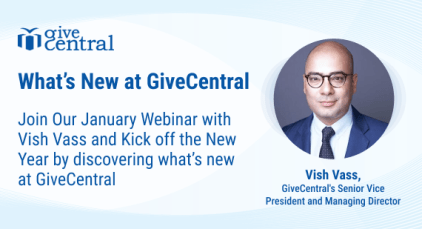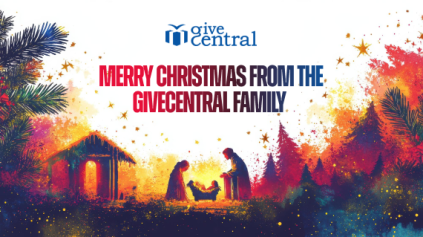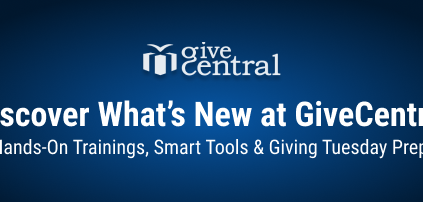Why is donor retention important?
Donor retention is the key to successful nonprofit fundraising. When you retain your donors, you spend less time, effort and money on constantly trying to find new donors and thereby increase your financial sustainability. Current research with nonprofit fundraising suggests that there is still something missing when it comes to donor engagement and retention.
Over 70% of people that we recruit into organizations never come back and make another gift, so we’re caught on this treadmill where we have to spend lots of money on acquisition which most nonprofits lose money on anyway, just to stand still.” – Professor Adrian Sargeant, Director of the Centre for Sustainable Philanthropy at Plymouth University
How do you end this vicious cycle of donor acquisition and loss for your organization?
Every organization has lapsed donors, donors who had been contributing to your cause but haven’t made a gift lately for some reason. To qualify as ‘lapsed’ these donors would have to be inactive for more than a year. While it is an unfavorable situation, nonprofits need to approach the problem in a slightly different light. In truth, lapsed donors present a significant opportunity.
They are familiar with your organization and trust you enough to contribute. More often than not, they are educated about your organization’s mission but are unsure of how their contributions are being utilized or find the giving process tedious. Use our simple strategy to regain lapsed donors.
In order to rekindle your relationship, you must build trust again and show them value. You need to identify your lapsed donors, find out why they are inactive and reconnect with them appropriately. Thank them for their last contribution and show them your achievement.
How do I renew?
What should be your fundraising or donation strategy? How to create a better donor experience? What kind of content will be most valuable, useful and engaging to convince and increase the retention rate? Donors, as well as clients, need to be courted, convinced and converted into ambassadors to provide long-term support.
Like any traditional customer experience, the goal of the donor experience is to build the relationship by investing time, monitoring performance metrics for your nonprofit, implementing tools that give you an integrated view of your data across teams.
How to get your lapsed donors to give again? 6 tips for a better donor experience.
1. Define a clear vision
“Stay humble,” “embrace change,” “make the difference” … Specify and qualify the relationship you want to engage with your donors to set guiding principles. It must be consistent with your missions and values to provide a fluid donor experience that resonates with your shared goals.
2. Know your donors
This is the key to your giving strategy: rely on the principles of customer intelligence to best target the expectations of your communities. Draw a portrait of your different donors, identify their most physiological needs, but also their deepest aspirations.
3. Create an emotional connection
Emotions shape attitudes and influence decisions. If your donors are emotionally engaged with you, such as clients of a private company, they will be more likely to adhere to your offer and subscribe to it repeatedly over time. For your fundraisers, they will also be much less sensitive to prices and amounts to invest.
4. Gather feedback
To improve the impact and success rate of your donation strategy, gather the opinion of your donors, via a small survey or a call on social networks. Invite your donors to share their ideas and make good use of them to personalize your communication.
5. Treat the content
A donation strategy focused on a better user experience must offer content that makes the relationship easier, useful and enjoyable. Start by creating content that meets the information needs, simplifies the life of your communities and generates positive feelings. Remember to adapt them to different moments in the life cycle of your donors: your brand equity will thank you.
6. Measure your results
Yes, nonprofit organizations also have their ROI and results targets! For your donation strategy, no taboo: talk about numbers, return on investment and profitability of efforts.You do not know where to start? Try the NPS or Net Promoter Score: the indicator of customer satisfaction and loyalty. To evaluate it, ask one simple question in your donor surveys: ” Would you recommend our organization to a friend or relative? “.
Bonus tip:
Explore the concept of ‘Customers’ for a nonprofits organization.
A donation or fundraising strategy is like a marketing campaign! Nonprofit organizations have everything to gain if they consider their donors to be clients, clients like any other.
Are donors like other customers? In setting up a fundraising campaign and fundraising strategy, nonprofit organizations tend to think no. Yet their needs are not so different! While it may seem odd to see and treat donors as clients, the relational development process, the brand awareness issues, and the end goal are no different between a nonprofit and a private company.
Do you need help in identifying the right fundraising strategy for your cause? Do you want to increase the results of your fundraisers or to keep your donors loyal? Also, think about building and optimizing your brand storytelling.
Donor Engagement donor experience donor retention Fundraising strategy nonprofit fundraising
Last modified: February 22, 2025

















